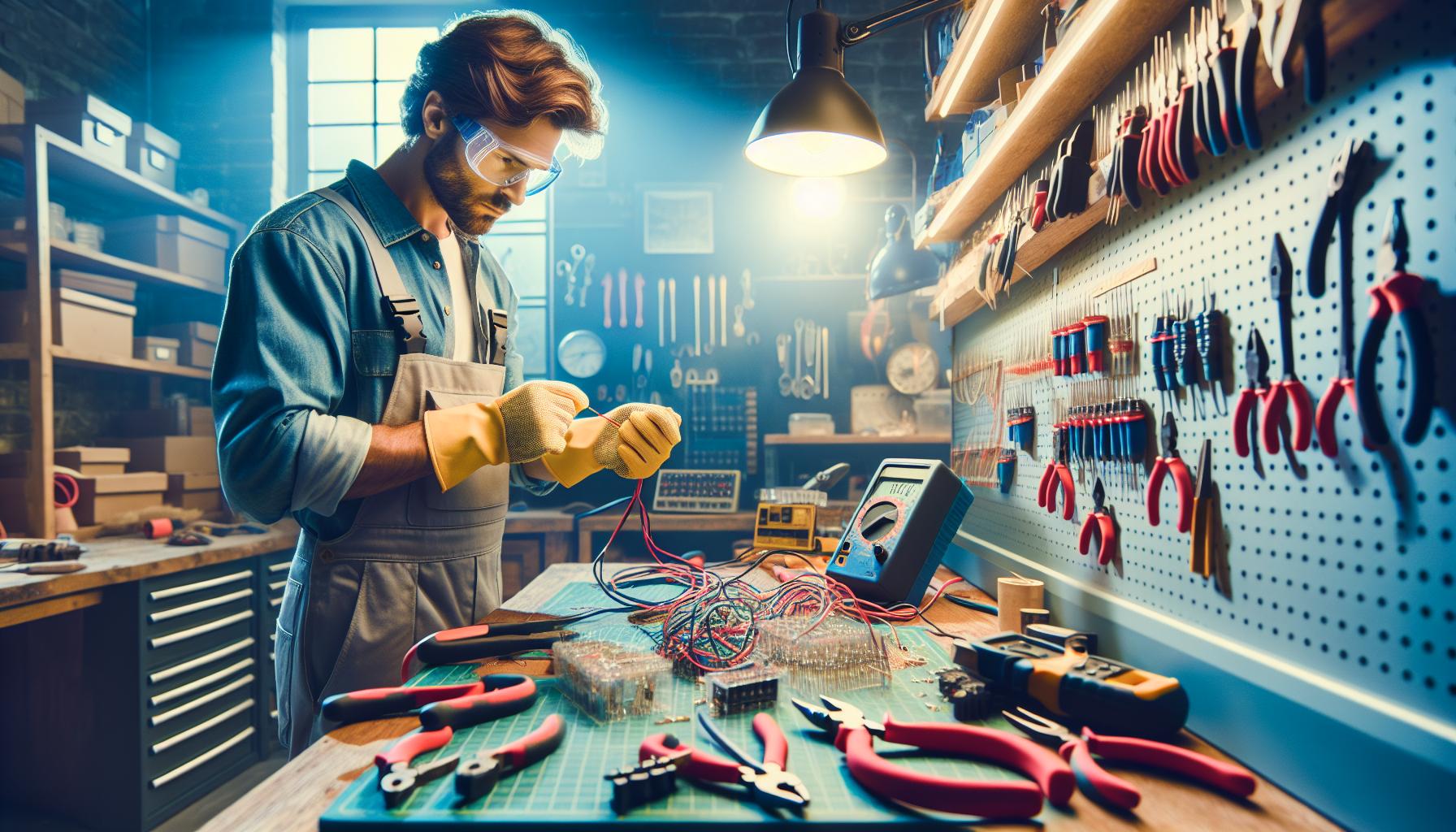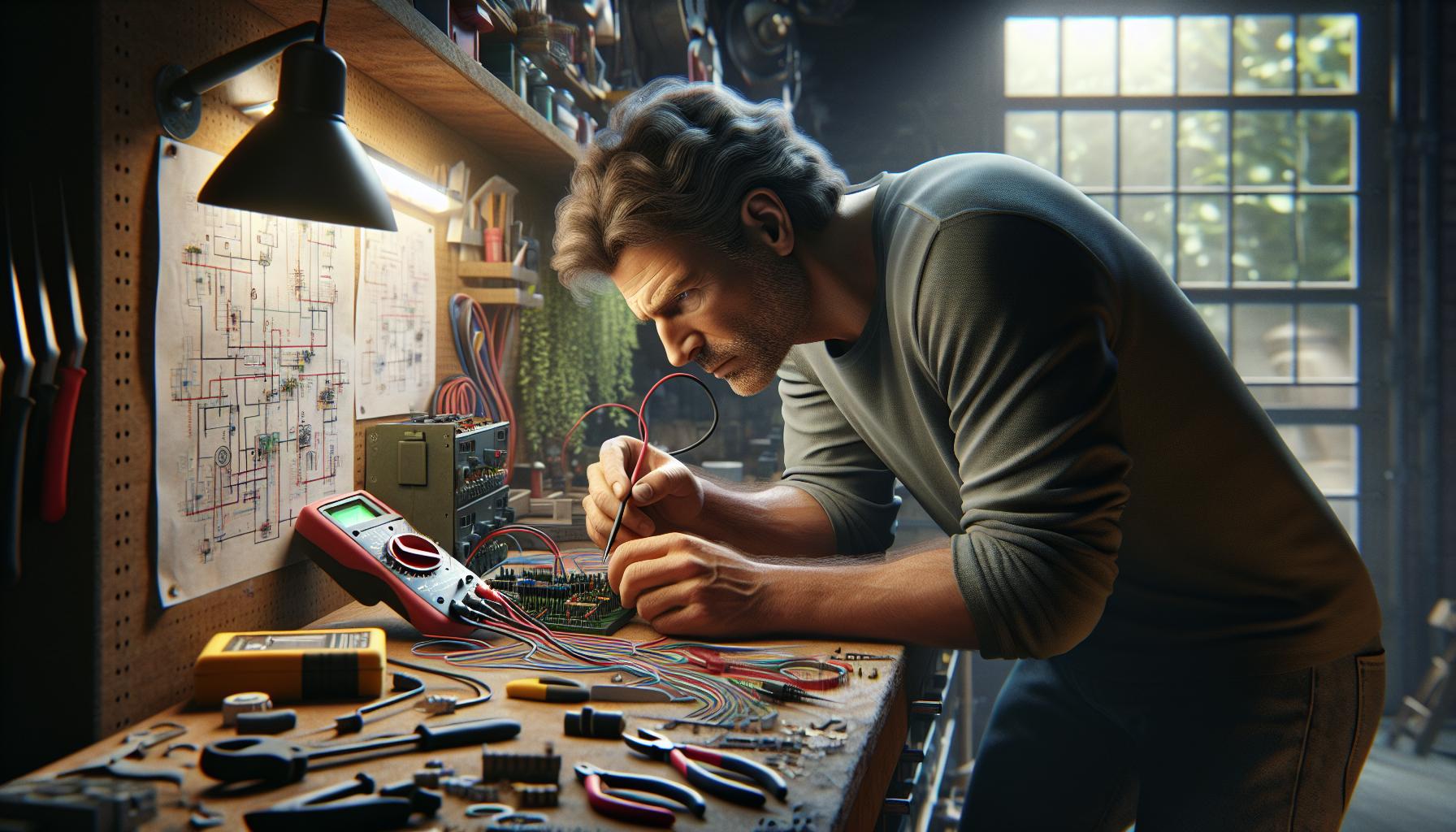Electric projects can be a game-changer for anyone looking to enhance their home or workspace. I’ve always found that diving into DIY electric projects not only saves money but also sparks creativity and innovation. Whether you’re a seasoned pro or just starting out, there’s something incredibly satisfying about bringing your ideas to life with just a few tools and materials.
From simple lighting upgrades to more complex gadgets, the world of DIY electric projects is vast and full of potential. I’m excited to share some of my favorite projects that are not only fun but also practical. Let’s explore how you can transform everyday items into something extraordinary while gaining valuable skills along the way.
Key Takeaways
- Cost-Effectiveness: DIY electric projects not only save money on repairs and upgrades but also cultivate creativity and innovation in home improvement.
- Broad Scope: The range of DIY electric projects is extensive, including lighting upgrades, smart home devices, and renewable energy installations.
- Essential Tools Required: Successful execution of projects demands essential tools, such as safety equipment, wire strippers, and circuit testers for both efficiency and safety.
- Popular Projects: Engaging in popular projects like custom home lighting solutions and renewable energy initiatives adds both functionality and aesthetic appeal to living spaces.
- Careful Planning Needed: Effective planning, including defining project scope and following local regulations, is vital for the successful execution of DIY electric projects.
- Troubleshooting Skills: Developing troubleshooting skills is key to overcoming challenges and ensuring the successful completion of DIY electric endeavors.
DIY Electric Projects
DIY electric projects encompass a wide range of activities that involve creating, modifying, or repairing electrical systems. These projects empower me to enhance my home or workspace, showcasing creativity while providing functional benefits. Engaging in DIY electric projects enables me to understand electrical principles better and develop practical skills that can prove invaluable.
Examples of common DIY electric projects include building custom lamps, creating smart home devices, or installing energy-efficient lighting. Each project offers a unique opportunity for hands-on experience and the satisfaction of completing a tangible item.
I can also explore renewable energy options, such as solar panel installations or wind turbine creations. These projects not only contribute to sustainability but also foster innovation in energy use.
Connecting with other DIY enthusiasts through forums and social media enhances the experience. Sharing tips, techniques, and project ideas creates a vibrant community focused on learning and improvement.
Diving into DIY electric projects serves as an exciting and practical way to enhance my surroundings while also gaining essential skills and knowledge in the electrical field.
Essential Tools for DIY Electric Projects

Having the right tools ensures smooth execution and enhances safety during DIY electric projects. Below are essential categories of tools that I find necessary for successful projects.
Safety Equipment
- Safety Goggles: Protect my eyes from debris and sparks.
- Insulated Gloves: Prevent electric shock during handling live wires.
- Face Mask: Reduce inhalation of dust and fumes when cutting or soldering materials.
- First Aid Kit: Address minor injuries that may occur while working.
- Fire Extinguisher: Ensure immediate response to electrical fires.
Basic Tools
- Wire Strippers: Allow for the precise removal of insulation from electrical wires.
- Screwdrivers: Facilitate the tightening and loosening of screws on electrical devices.
- Pliers: Aid in gripping, twisting, and cutting wires.
- Multimeter: Measure voltage, current, and resistance to troubleshoot circuits.
- Tape Measure: Ensure accuracy in cutting and installing materials.
- Soldering Iron: Create strong electrical connections by melting solder onto wire joints.
- Circuit Tester: Verify the presence of voltage in circuits for safety checks.
- Drill: Install fixtures and sockets into various surfaces.
- Oscilloscope: Analyze electrical signals in more complex projects for precise measurements.
- Heat Gun: Shrink heat-shrink tubing and assist in other thermal applications.
Popular DIY Electric Projects

Exploring DIY electric projects offers endless possibilities for creativity and innovation. Here are some popular projects that enhance living spaces while building practical skills.
Home Lighting Solutions
Creating custom home lighting solutions enhances ambiance and adds a personal touch to any space. Here are some popular ideas:
- Smart LED Bulbs: Install smart LED bulbs that connect to Wi-Fi networks, allowing remote control through mobile apps or voice commands.
- Under-Cabinet Lighting: Add LED strip lighting beneath cabinets for improved visibility and aesthetic appeal.
- Solar-Powered Garden Lights: Build solar-powered lights for outdoor spaces, utilizing renewable energy while reducing electricity costs.
These solutions promote efficiency, allowing for innovative designs in home lighting.
Renewable Energy Projects
Engaging in renewable energy projects fosters sustainability and can lower energy costs. Here are engaging ideas to consider:
- Solar Panel Installation: Set up solar panels to harness sunlight, providing a sustainable power source for homes or small devices.
- Wind Turbines: Create small-scale wind turbines to generate electricity, particularly useful in windy areas to complement solar projects.
- DIY Battery Storage Systems: Construct battery storage systems to store energy from solar panels or wind turbines, enhancing energy independence.
These projects contribute to environmental responsibility while saving money on energy bills.
Tips for Successful DIY Electric Projects

Successful DIY electric projects require careful planning, design, and troubleshooting skills. Following specific tips can lead to efficient and satisfying outcomes.
Planning and Design
Planning and design play a crucial role in the success of any DIY electric project. I recommend breaking down the project into manageable steps. Define the purpose and scope of the project first. Create a detailed list of materials, tools, and components needed. Drawing diagrams helps visualize circuit layouts and placement of electrical parts. Using design software or templates can streamline this process. Additionally, researching similar projects can provide insights and inspiration. Always ensure that designs meet local building codes and electrical regulations for safety and compliance.
Troubleshooting Common Issues
Troubleshooting common issues prevents unnecessary delays and frustrations. I approach problems methodically. If a circuit fails to operate, first check the power source and connections. Inspect wiring for damages or improper connections. Using a multimeter helps verify voltage levels and continuity. If specific components malfunction, replacing them with tested ones provides clarity. Documenting any changes made in the process aids in identifying recurring issues. Engaging with online forums can also offer solutions from experienced DIY enthusiasts facing similar challenges.
Rewarding Experiences
Embracing DIY electric projects has been one of the most rewarding experiences for me. Not only do these projects allow me to enhance my living space but they also empower me with valuable skills and knowledge. There’s something incredibly satisfying about creating or modifying electrical systems with my own hands.
I encourage you to dive into this exciting world. Whether you’re a beginner or have some experience, there’s always something new to learn and create. Plus, connecting with fellow enthusiasts can make the journey even more enjoyable. So grab your tools and start exploring the endless possibilities that DIY electric projects offer. You might just surprise yourself with what you can achieve.



